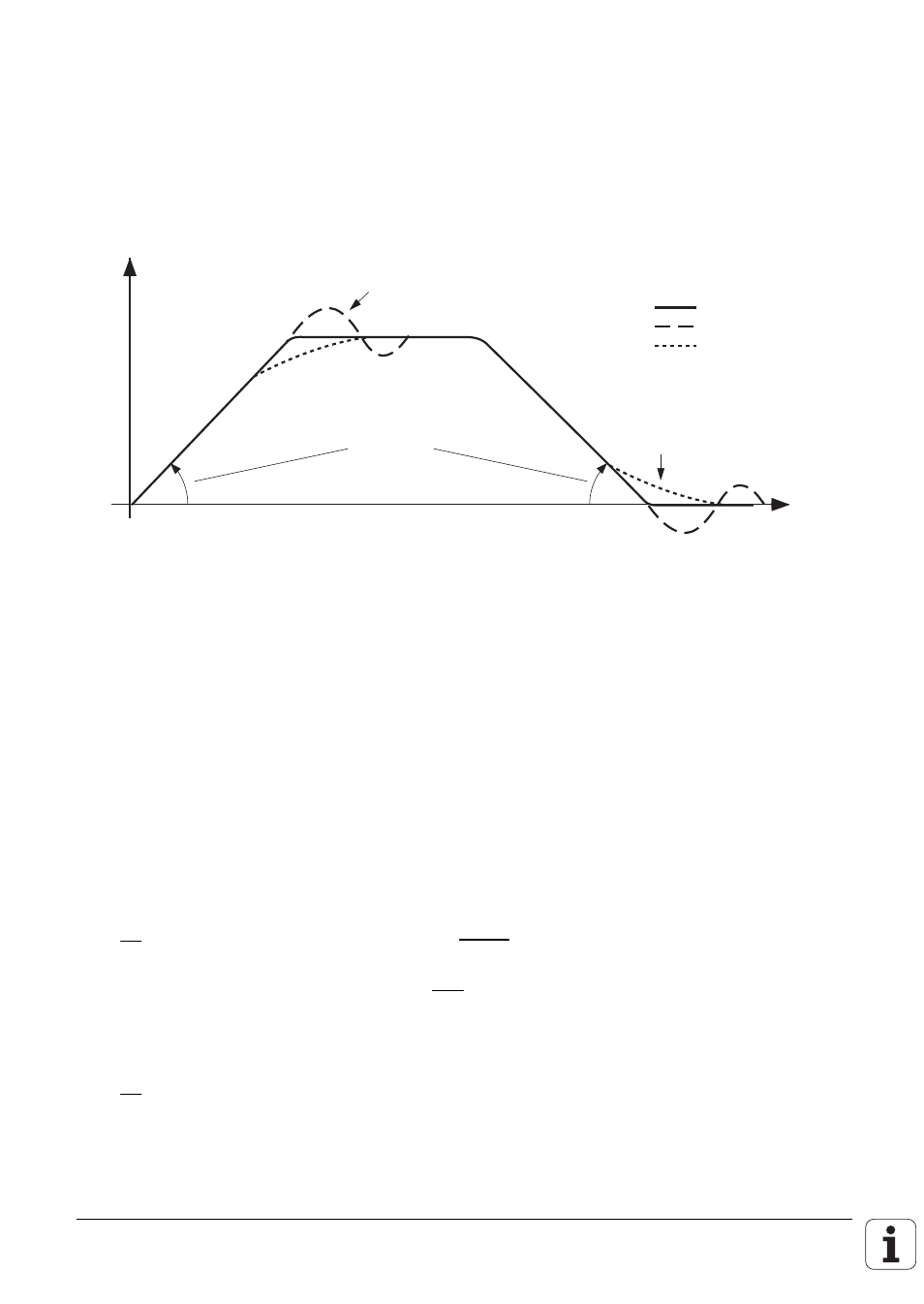HEIDENHAIN TNC 407 (243 020) Technical Manual User Manual
Page 193

3 Servo positioning of the NC-axes
The k
v
factor (position loop gain) determines the amplification of the control loop. The optimal k
v
factor must be determined by trial and error.
If you choose a very high k
v
factor, the lag is very small. However, this can lead to oscillations when
moving into a new position. If the k
v
factor is too small, the new position will be reached too slowly.
For axes that are interpolated with each other the k
v
factor must be equal to prevent contour
deviations.
The following diagram shows the response for various k
v
factors.
U [V]
t [s]
MP1060
MP1810
MP1810
kv correct
kv too large
kv too small
The acceleration can be programmed by the machine parameter MP1060. It determines the slope of
the ramp on the rising and falling edges.
For axes which are mutually interpolated the k
v
factor must be the same, in order to avoid contour
distortion!
MP1060
Acceleration
Entry: 0.001 to 5.0 [m/s
2
]
MP1060.0
Acceleration X axis
MP1060.1
Acceleration Y axis
MP1060.2
Acceleration Z axis
MP1060.3
Acceleration 4th axis
MP1060.4
Acceleration 5th axis
The following formula shows the relationship among K
v
factor, feed rate and servo lag:
k
v
=
v
s
e
a
k
v
= position loop gain [
m/min
mm
]
v
e
= rapid traverse [
m
mm
]
s
a
= servo lag [mm]
or
s
a
=
v
k
e
v
